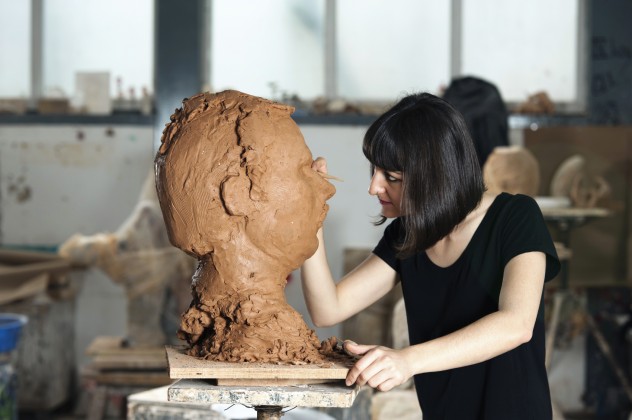The world is full of heroes.
Some of our heroes are people that exemplify qualities such as ingenuity, flexibility, agility, determination, or reliability. For example, we are impressed by the extraordinary speed and strength of basketball player Lebron James or the extraordinary agility and accuracy of soccer player Lionel Messi. We are awestruck by the perceptiveness and intelligence of scientist Marie Curie. We admire the bravery of Rosa Parks or Amelia Earhart. We note the selflessness of Mother Theresa. These people all possess transcendent human qualities that we also possess. The difference, often, is that we hold the same qualities to a lesser degree. Sometimes the people we consider “heroes” are those that demonstrate in large measure qualities that we feel we lack.
But humans are not our only heroes. We also emotionally connect with institutions (the United Nations) or concepts (democracy) that exemplify values we believe in: justice, equality, freedom. We may admire the incredible abilities of different animal species as well. So “hero” does not refer to a testosterone-driven male figure but, rather, someone or something exemplifying an extraordinary human quality.
Imaginative educators understand that the curriculum is full of heroes.
You’ve probably noticed that many young people begin to have idols–or perhaps you remember your own! It is not unusual to see pictures of a rock star, artist, or actor plastered into lockers or onto bedroom walls. Our students can become quite fanatical about learning all there is to know about some athlete, actor, author, song writer, or world leader. What you may not have noticed is that this interest in associating with heroes tends to coincide with the development of literacy. (Interested in the connection between heroes and literacy? Scroll down to the bottom of the post for more information on this aspect of Imaginative Education.)
Educational Importance
The curriculum is full of heroes; every topic can be seen as heroic in some way.
As part of your planning, you want to identify what is heroic about your topic. (Use the list provided below!) By conveying a heroic quality in your teaching–that is, by framing your teaching in a way that leaves students feeling how the topic embodies or displays a transcendent human quality–you evoke your students’ emotions. Your teaching becomes story-telling. This is the key to making any knowledge memorable and meaningful. (More on how to employ the story-form here (Tips For Imaginative Educators: #1 Find The Story In The Topic) and why we need to evoke students’ emotions in learning here (“4 Reasons Why “Relevance” Can Limit Student Engagement”.)
BIG IDEA: Your students are associating with heroes constantly in the world around them. Indeed, they are actively seeking heroes. Imaginative Educators bring out the heroic in the curriculum topics they teach.
Free Resource & Practice
Meet your new BFF: a list of heroic qualities. Keep it handy as you plan your teaching.

TEACHER CHALLENGE. Let’s practice. Take a topic you are teaching tomorrow (or soon) and choose ONE thing on this list that might convey what is “heroic” about the topic. I call this a “challenge” for good reason–few educators are asked in teacher education programs to describe how topics are “heroic”. I certainly wasn’t! So what do I mean??
If it helps, you might “personify” the topic and think—what admirable human quality describes this topic or is exemplified by it?
Here are a few examples: If we thought of punctuation for a moment…what is heroic about it? What’s its superpower? Well, one possibility is that it offers us a great COURTESY for the clarity it affords language. Punctuation allows us to communicate (semi-)effectively. Acknowledge that courtesy! What is heroic about different verb tenses? One idea is POSSIBILITY. Verb tenses are ingenious turns of language that allow us to experience and represent history, the future, conditions and whatever we imagine. Have you ever acknowledged the THRIFT of mathematical symbols or equations? Have you ever acknowledged the TENACITY of the single-celled organism or the PERSISTENCE of water? (No matter how hard you try…you can’t get rid of water).
Courtesy, possibility, thrift, tenacity, persistence–these are all transcendent human qualities students understand because they also feel/experience them. They are the means to emotionally connect students to topics.
CALL TO ACTION: Share! Pick a topic and play with the list of heroic qualities. Have fun (it can be fun–partner up and spice up your next department meeting!). Then PLEASE leave a comment. Tell us the topic you are teaching and what is HEROIC about it.
More Detailed Examples
You can find lots of examples of lessons and units that employ heroic qualities at the Imaginative Education Research Group website. Explore! (*Go about 1/2 way down the page to find “romantic” lessons/units containing this cognitive tool.)
Read a post I did some time ago now called Calling All Imaginative Math Teachers. It contains a great example of how mathematical equations can be taught in a way that evokes the idea of BEAUTY. Mathematicians were asked—which is the most beautiful equation? (Any guess which one won?)
Teaching about Energy and Matter? (approx. Grade 4 Science) Here is a super engaging lesson by imaginative educator Leone Payson. (Thank you for sharing Leone!) She frames the teaching around the idea of energy as IMMORTAL. Then, in the excerpt provided below she describes an activity in which students assign each kind of force its own heroic quality. (Be sure to scroll down just below the lesson to see her comments on how this unit went and the feedback she received.)
 Loading...
Loading...
This lesson was a huge hit…here’s a recent comment from Leone about how much the students learned and what the parents thought: “Four months after [learning about forces] I had students explaining that lesson in great detail to their parents during student conferences. I had a lot of positive parent feedback about the lesson as it was something children talked about at home when asked ‘what did you do at school today?’, and resulted in one of my favourite teaching moments. I had a student who didn’t participate in the lesson, but walked around and observed the other students. When creating the superhero, I was scribing for her and she noted that her light energy superhero’s nemesis was water because the deeper you go into the ocean the less light there is. It was the first science fact she had ever shared with me! Woo!”
What’s the connection between identifying heroes & literacy?
 Dr. Kieran Egan describes the interesting effect literacy has on the human mind–you can get a full account in his book entitled The Educated Mind: How Cognitive Tools Shape Our Understanding (1997). One significant consequence of literacy is that suddenly the world can seem quite large and even daunting. Young people need to figure out where they fit in. This is hard to do at a time when many young people have limited freedoms; they are subject to the many rules of family, friends, school, and society.
Dr. Kieran Egan describes the interesting effect literacy has on the human mind–you can get a full account in his book entitled The Educated Mind: How Cognitive Tools Shape Our Understanding (1997). One significant consequence of literacy is that suddenly the world can seem quite large and even daunting. Young people need to figure out where they fit in. This is hard to do at a time when many young people have limited freedoms; they are subject to the many rules of family, friends, school, and society.
So how do young people begin to figure out their place in a vast and wide world?
Dr. Kieran Egan suggests a particular feature of the imagination–a particular cognitive tool–emerges with literacy: the tendency to associate with heroes/heroic qualities. Great athletes posses the strength, agility, speed or skill the child lacks. Celebrities posses the popularity, wealth, fame, and talent the child lacks. So, the people, ideas, or institutions we admire often demonstrate a quality that transcends our own immediate reality.
What we need to remember as educators is that young people actively seek out heroes —or, at least associate with shared human “heroic” qualities—in the world around them. This becomes a frequent activity young people once they become literate because it offers them a sense of security and identity.
Here’s a brief video in which Dr. Egan and IE educator Caitlyn James talk more about Heroes & Heroic Qualities:
Summing Up
Imaginative Educators engage feature of the human imagination in school that students are actively employing outside of school. In this case, our literate students are actively and constantly seeking associations with heroes in the world around them. Finding these connections is meaningful to students.
So, it’s simple: Tap into this feature of your students’ imaginations and you can make the knowledge of the curriculum you are teaching more meaningful and memorable too.
Are you NEW to imaginED?
Subscribe now. Free. No Spam. Easy opt out. Weekly email.
Did you miss other TIPS in the Tools of Imagination Series?

